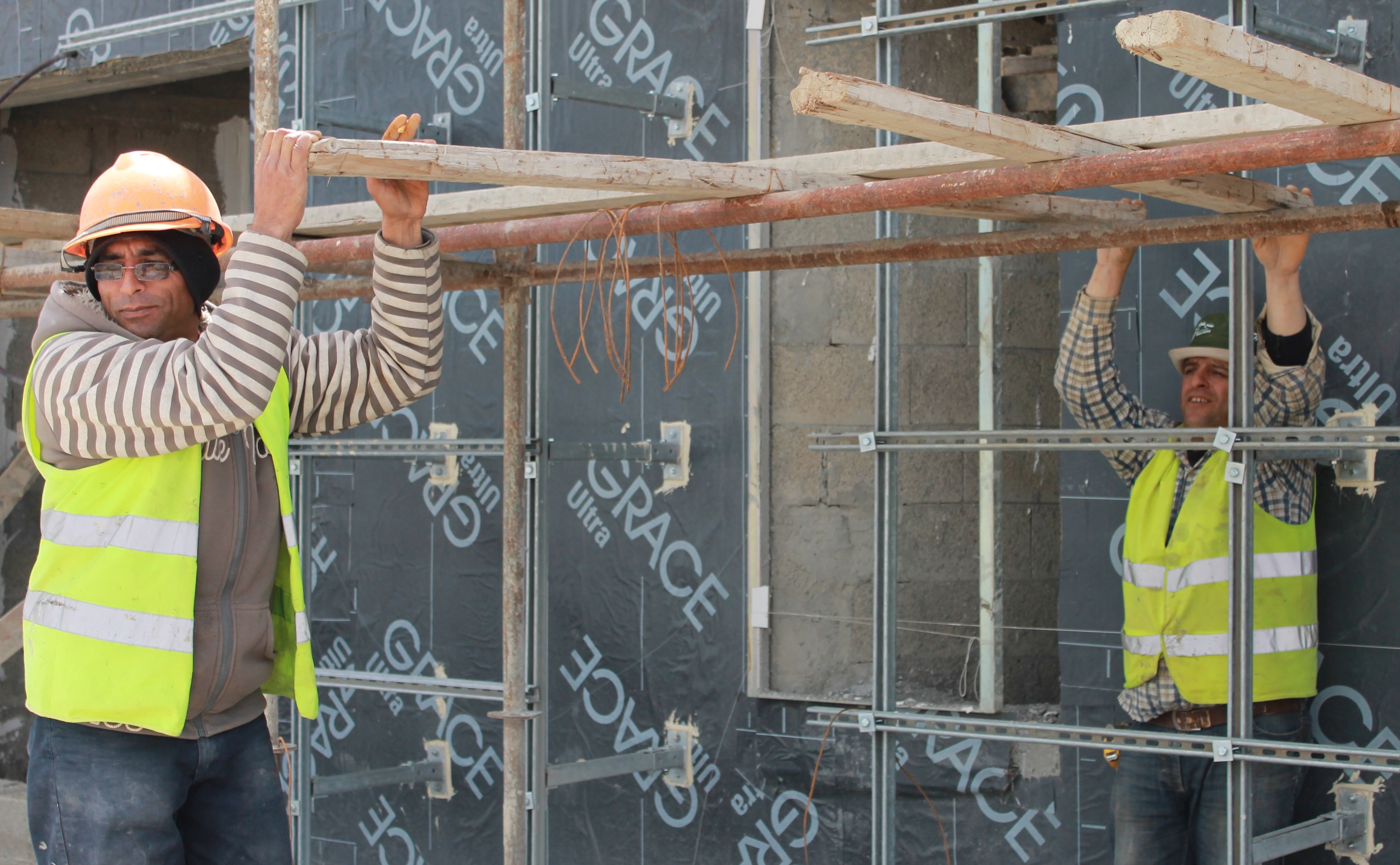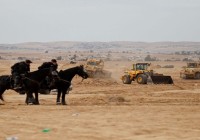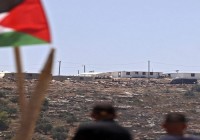Why Have we Failed in Implementing Minimum Wage Rate Decision?
More than one-third of the workers in the private sector are still being paid less than the 1450 NIS minimum wage rate, though the decision has been in implementation for two years now. Women are considered the most vulnerable to exploitation in wages, as half of the female workers in the private sector are paid below the minimum rate.
Ramallah- Palestine Economy Portal | Asma Marzouq-Implementing the minimum wage rate decisiondid not make a big difference for the workers in the private sector. The number of workers being paid below the rate in the first year of implementation reached 117 thousand workers, which was only reduced to 104 thousand workers by the end of that year. However, even this small reduction should take into account that the real number of beneficiaries was much less than the difference recorded between the beginning and the end of the year, as several other reasons contributed inthat difference such as increasing unemployment rates, especially after the last Israeli aggression on Gaza. According to the Central Bureau of Statistics, it’s hard to measure the correct number of beneficiaries of the decision.
Where is the Problem?
Samir Abdullah, Head of Palestine Economic Policy Research Institute (MAS), attributes the failure in implementing the decision that has been in action for two years now, to the government; as it has not provided mechanisms to help in implementing it.He says: “the government cannot implement the decision because there is no sufficient monitoring, nor a punishment mechanism to use for the non-compliant organizations.”
He adds: some sectors cannot bear the burden of the decision because the productivity of the worker there is less that the set minimum wage rate, such as in spinning and weaving factories, and public services. In case these organizations were forced to implement this decision, it might force them to shut down, or decrease the number of workers. He argues that the decision should have been better studied before it was approved, and the minimum wage rate should have been tied to other factors such as productivity and geographical locations.
He continues: the government must find a mechanism to support these sectors, whether by supporting workers’ wages there, setting a minimum wage rate that differs from other sectors, or by excluding these sectors from the decision, remembering that tens of thousands rely on these sectors as a means of living.
Ministry of Labor Admits
Director General of Inspection at the Ministry of Labor, Abdul Karim Daraghmeh, agrees that it would be difficult to implement thedecision in some of the weak sectors. However, he says that there has been some efforts to form an agreement which helps these sectors comply with the minimum wage rate through a mechanism that provides them with support, but they were all unsuccessful.
He adds: the government is responsible for the weak implementation of the decision. When the decision was approved two years ago, the ministry was not provided with any new vehicle for inspection, or any qualified inspectors. Instead, they relied on the ministry’s potential to bear the big new burden; pointing that the ministry is doing all that it can through putting an inspection plan for each directorate.
He continues: “We are currently in the midst of a wide inspection of facilities around the West Bank, especially the ones employing female workers, which will result in sending notifications, and referring a large number of the non-compliant employers to judiciary.”
Workers do not complain
Siham, who works in one of the kindergartens in Um Sharayet, Ramallah, gets paid 800 NIS per month. She says that along with two other colleagues, she has been demanding their employer to apply the minimum wage rate for over a year now, but that the employer did not agree on the pretext that the financial condition of the institution is weak. Siham says that she even told them “If you don’t like it you can leave”. This kindergarten is not a registered institution and does not apply the Labor law, just like many other kindergartens, nurseries, and small institutions.
Legal advisor at the Ministry of Labor Buthaina Salem says: “one of the biggest problems we face in detecting non-compliant employers is the complicity of the employees who cover for them, fearing that they’d lose their jobs if they don’t do so.”
The Amount is Primarily not Fair
Much criticism has been pointed towards the minimum wage rate, as it is below poverty line (2300 NIS). However, reaching that number was not easy, but rather the result of intense negotiations between the three parties (the Government, Employers, and the Federation of Trade Unions). The question here is: Is the amount still acceptable two years and a half after its initial approval?
ShaherSaad, secretary general of the Palestine General Federation of Trade Unions, told the Portal: “the federation did not approve the rate from the first place, and its representatives voted against it, but it was imposed on us following the consensus of the committee, which was formed of different parties. Until today, the federation still demands to raise the rate.” Saad pointed that one of the agreement’sterms discusses the possibility of raising the rate to cope with the high costs of living, following a yearly meeting between the three concerned parties, which is what they currently rely on to raise the rate.
Gaza is Excluded from the Equation
The decision was not implemented in Gaza as it was approved before the formation of the National Unity Government in January 2014. But though the government has been formed for over a year now, they still have not worked on implementing the decision in Gaza, despite the fact that the number of workers who are paid below the minimum wage ratethere is higher than that in the West Bank. The last report of the Central Bureau of Statistics show that 63% of the workers in the private sector in Gaza are paid an average of 730 NIS per month, while the average in the West Bank reaches 1100 NIS per month.
The Ministry of labor attributes this to the hardness of the economic situation in Gaza, especially after the last Israeliwar which destroyed several hundreds of the economic institutions and caused the unemployment rates to raise to unprecedented levels. However, the ministry is planning to form a committee to study the minimum wage issue in Gaza.
In comparison with Israel
Abdul Fattah Shukr, Professor of economics at Al Najah National University, attributes the weak implementation of the decision to the weak representation of the workers and dispersing and politicizing it, as well as the lack of a monitoring mechanism stemming from it;when compared to the power of the Histadrut(General Federation of the Israeli Trade Unions).
He continues: Histadrut has enough power to put pressure on the government and other parties, as it did lately, when it was able to raise the minimum wage 350 NIS after negotiations with the economic organizations. Thus, the minimum wage rate in Israel became 4650 NIS, and it will be raised another 350 NISin the second phase after a year and a half.
It is worth noting that though the costs of the goods and services offered for the Palestinian and Israeli citizens are almost the same, the wages of the former ones are 15 times greater than the Palestinian workers’ wages.



